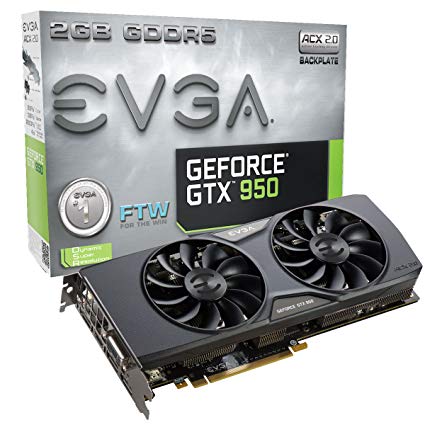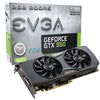- Techiezoid2Home
- NVIDIA GTX 960 2GB
- NVIDIA GTX 960 2GB
-
Free Delivery
On a complete pc build
-
99% Customers
Satisfied
-
Free return
If Wrong Product Shipped
-
Payment
Secure System
-
Only Best
Brands






NVIDIA GTX 960 2GB
- Product SKU:
- Category: Graphics Cards
NVIDIA recently launched the GTX 970 and GTX 980 based on its new "Maxwell" architecture, torching the market with an unreal combination of performance, power-draw, and fan-noise, which made them overkill for Full HD. The two can handle any game at QHD (1440p) and can provide playable frame-rates at 4K, with some eye-candy lowered.
That creates the need for NVIDIA to come up with a GPU that's just right for Full HD, but with low power-draw and pricing to benefit from the new architecture. "Maxwell" also presents NVIDIA with an opportunity to cut costs because its current sweet-spot graphics card, the GeForce GTX 760, is based on a 3.5 billion-transistor GPU with a surface area of 294 mm² and just 24 percent less power draw than GTX 970 for 51 percent lower performance. Since NVIDIA is still on the 28 nm process, it might as well build a smaller GPU based on "Maxwell" to cut on costs, while hopefully transferring those savings to the consumer.
Full HD is still the most popular gaming-PC resolution, and the advents of 4K and affordable 1440p haven't managed to shake its dominance yet. People still seem to be buying monitors based on panel-size rather than resolution and are also happy to hold onto a monitor for several years. There are, hence, three kinds of consumers: First are those on a tight budget and the ability to buy a reasonably big (24-inch) Full HD monitor for cheap. Second are those who want to convert their vanilla desktops into gaming PCs to game on their Full HD TVs. The third kind is holding onto an old Full HD monitor and drifts between a mid-range graphics card every other year. NVIDIA and AMD can hence ill-afford to leave this resolution unaddressed with each new architecture.
Note: This is a system pulled imported card in 9/10 condition without box with 1 month replacement website warrenty .
NVIDIA recently launched the GTX 970 and GTX 980 based on its new "Maxwell" architecture, torching the market with an unreal combination of performance, power-draw, and fan-noise, which made them overkill for Full HD. The two can handle any game at QHD (1440p) and can provide playable frame-rates at 4K, with some eye-candy lowered.
That creates the need for NVIDIA to come up with a GPU that's just right for Full HD, but with low power-draw and pricing to benefit from the new architecture. "Maxwell" also presents NVIDIA with an opportunity to cut costs because its current sweet-spot graphics card, the GeForce GTX 760, is based on a 3.5 billion-transistor GPU with a surface area of 294 mm² and just 24 percent less power draw than GTX 970 for 51 percent lower performance. Since NVIDIA is still on the 28 nm process, it might as well build a smaller GPU based on "Maxwell" to cut on costs, while hopefully transferring those savings to the consumer.
Full HD is still the most popular gaming-PC resolution, and the advents of 4K and affordable 1440p haven't managed to shake its dominance yet. People still seem to be buying monitors based on panel-size rather than resolution and are also happy to hold onto a monitor for several years. There are, hence, three kinds of consumers: First are those on a tight budget and the ability to buy a reasonably big (24-inch) Full HD monitor for cheap. Second are those who want to convert their vanilla desktops into gaming PCs to game on their Full HD TVs. The third kind is holding onto an old Full HD monitor and drifts between a mid-range graphics card every other year. NVIDIA and AMD can hence ill-afford to leave this resolution unaddressed with each new architecture.
Note: This is a system pulled imported card in 9/10 condition without box with 1 month replacement website warrenty .











